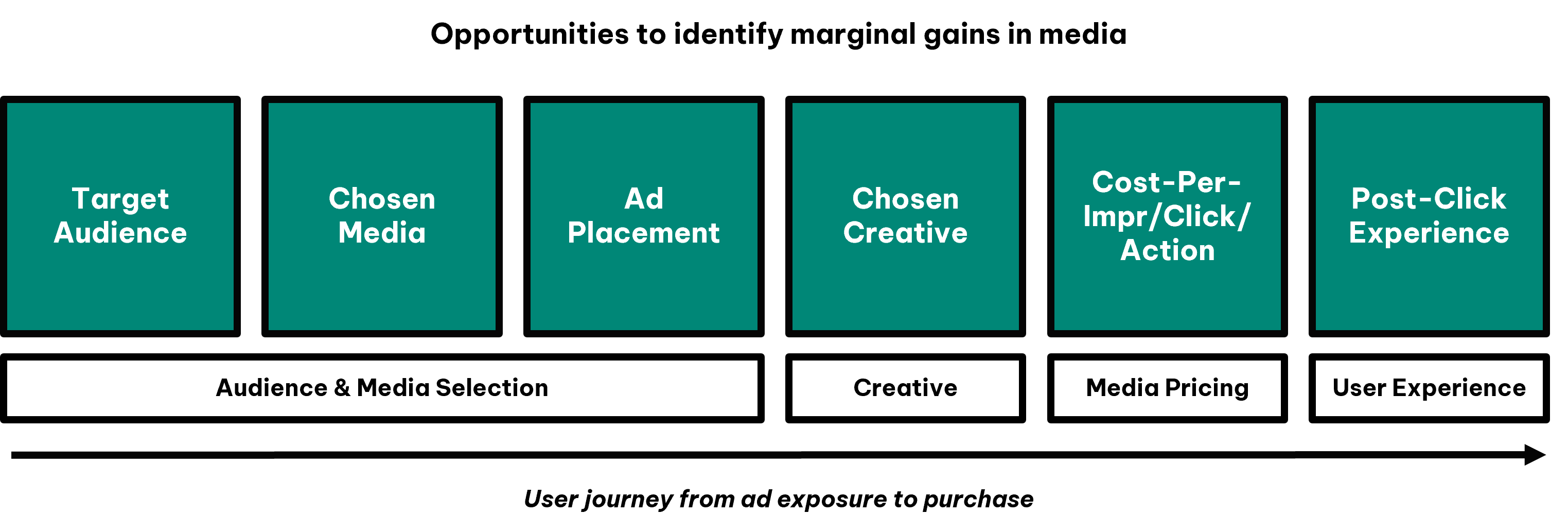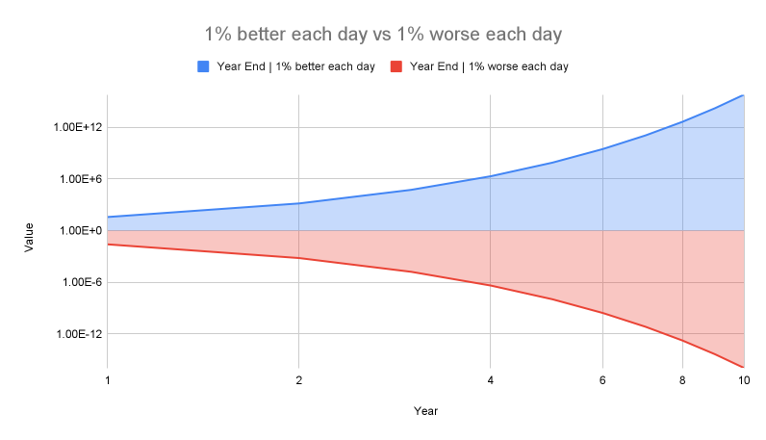Why you should apply ‘marginal gains’ theory to your media

Opinion: Strategy Leaders
But how do you actually identify areas for incremental gains in your performance media and act upon them?
Many of you will have heard of Sir Dave Brailsford, who popularised marginal gains and ‘The 1% Factor’ as Performance Director for Team GB Cycling.
Brailsford took Team GB from 1 gold medal in 100 years to what is commonly thought of as the best run in cycling history: 178 world championships, 66 Olympic/Paralympic gold medals and five Tour de France victories in a 10-year period.
This amazing feat was achieved through a laser focus on detail and the belief that the sum of many ‘small’ changes would lead to significant shifts in performance output.
The same principle applies to performance marketing. Small improvements across digital campaigns can lead to sizable shifts in channel performance, contributing to real business impact in your revenue, ROI and customer acquisition costs.
What’s more, creating efficiencies can allow you to do things like reinvest the saved costs in prospecting for the long-term.
There is of course going to be a ceiling to these gains in each platform, but it’s about identifying and searching for that ceiling in the most efficient and effective way possible.
More often than not, you can apply learnings across media channels for maximum effect.
Marginal Gains in action
It’s in the name: performance media has to perform.
It’s often quicker to see the impact of our optimisations on shorter-term audience behaviour (clicks, sales) than it is on longer term brand metrics such as brand awareness scores and favourability indicators.
It’s therefore the responsibility of performance advertising agencies and teams to identify areas for marginal gains that can create cumulative headway in bottom line business results.
Keep in mind that all advertisers have access to the same ad platforms, the same ad auctions, the same product features and the same audiences. And all those advertisers with access to all the same tools are competing for milliseconds of audience attention.
Keep doing the same thing and you’ll go backwards. Identifying areas for marginal gains – and acting on them – is how you stay on the front foot.
It must be stressed that seeking out marginal gains in performance media isn’t the end-game.
We have to strike a balance between short (direct response/sales activation) and long (brand building) as a sustainable return in advertising is only achieved through a committed combination of the two.
We all need to swing for the fences sometimes, make some bigger bets — but getting the short (pointy end) to work as hard as possible is the focus here.
But how do you actually identify areas for incremental gains in your performance media and act upon them?
Since every business is different, the first thing to do is an end-to-end review of your activity to consider which key junctures you can have an impact on.
All of these points present an opportunity to refine your audience, improve the rates at which people engage with your advertising and the price you pay for a desired action.
The kinds of actions you might take

Media quality and placements – Are you reaching people in the places you intended to? Digital media placements differ vastly in their quality and potential impact. Review your platform placement reports, viewability metrics and engagement rates. Establish a better balance between efficiency metrics and quality of the buy. The latter may not always have a short-term performance indicator, but there is an obvious upside to your brand appearing alongside suitable, safe and contextually relevant content.
Reach – Are you maximising reach and impression share against your most valuable audiences in a given channel? Extend your reach by going broader and ratcheting-up your in-platform campaign budgets to find the sweet spot of both effectiveness (revenue, leads) and efficiency (ROI, CPL). Chances are, there’s some quick wins to be had just by getting in front of more of your desired audience.
Frequency – Is frequency at least in the ballpark you would expect it to be in, or are you hammering ‘last 30 day viewers’ incessantly at a frequency of 30? Or perhaps you’re spreading yourself too thin, across too many campaigns, and a frequency of one is unlikely to move the needle in categories with longer paths to purchase.
Creative – Unsurprisingly, creative is the single biggest contributor to campaign ROI (Nielsen, 2017). Whilst a ‘fast lane’ approach to creative concepting and ‘hero’ production wouldn’t always be advisable, the beauty of digital is the speed at which you can optimise and iterate your live ad assets.
Post-click experience – Don’t neglect it. There’s no silver bullet, but spend time with your Analytics data to better understand key user drop-offs and possible points of friction in their journey.
Bidding strategies – Where possible, integrate value into your conversion events to give the algorithms richer signals to optimise against. Conversions carry different revenue weightings and you want the platforms to bid accordingly. Where possible, import valuable offline sales data back into the ad platforms to improve the strength of your optimisations and reporting. This is crucial for lead-gen businesses.
Measurement – All of this would be a wasted effort without appropriate measurement methods. As the efficacy of cookies continues to dwindle, solutions like Enhanced Conversions (Google) and Conversions API (Meta) will become table stakes. Whilst your developers get to work on implementation, review your media performance in Analytics on an assisted and non-last-click basis to avoid last-click tunnel vision.
Alphas and Betas – Whilst all advertisers have access to the same ad platforms, one way to get ahead of the competition is to do something they’re not. Ad platforms release new betas in quarterly cycles, and these can be a great way to test new features before they become accessible to all.
Reliable reporting truth – Finally, make sure you have a single source of reporting truth, and a reliable one at that. Not everything that can be counted, counts. However, many advertisers are not tracking important data points – data signals that could tell them so much more about how their audience is behaving. Not only can you understand more about audience behaviour, but you can turn these data points into seed audiences that you can build upon.
Heading in the right direction…
What this all really boils down to is a shift in perspective; redefining the way we see small improvements so that we can focus on how they add up to something big.
Now more than ever, we need to be engaging in an open-ended process of incremental improvement. Hopefully you now have more insight into how you could go about identifying areas of improvement within your performance media.
We’ve seen how the big picture is made up of small things, so the prospect of taking action need not feel daunting.
Opportunities for improvement are waiting to be discovered, and all you need for the hunt is the right perspective and a bias towards taking action.
Jack Chape is chief media officer at RocketMill.





